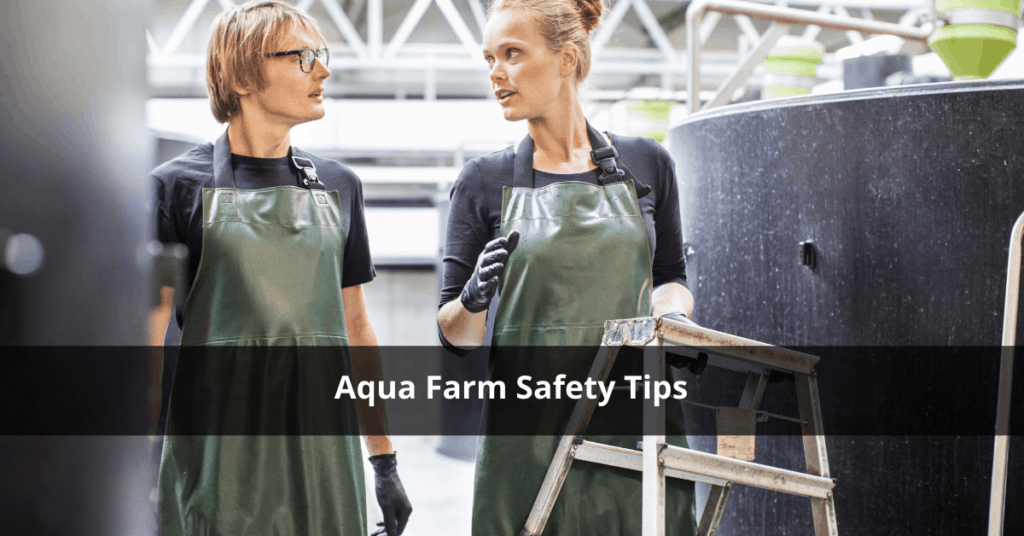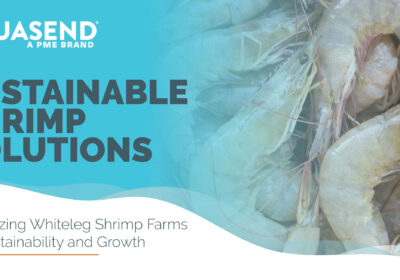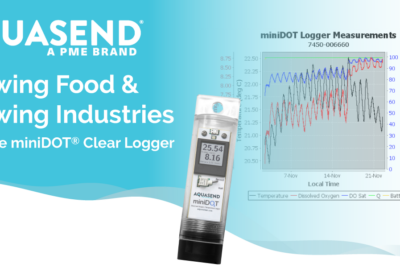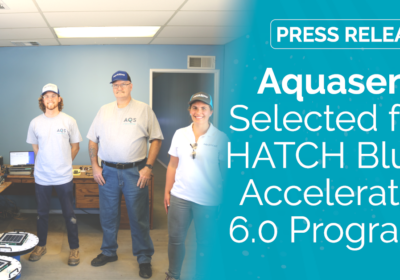Aqua Farm Safety Tips

Developing a Safety Plan
In order to prevent potential aqua farm accidents and injuries, as well as any potential ensuing litigation, it is important to develop a safety plan. Your plan should consist of a few critical components.
- Safe work procedures and a method for identifying hazards should be at the top of the list
- Plan for training and monitoring workers in the use of safety procedures
- A disciplinary component which could be invoked in the event of non-compliance to stated procedures
Finally, all steps of the developed safety plan need to be documented as proof of due diligence, in the event that any legal issues arise.
Identify the Risk and Hazards
Any job or task which involves the potential for injury or physical harm should be closely reviewed and assessed for the possibility of accidents. Some of the areas which should be reviewed include:
- Nets, net reels, harvest procedures
- Oxygen storage and delivery systems
- Lifting procedures to avoid muscle and back injuries
- Risks of employees working alone on any task or project
- The work environment (inclement weather, heat, cold, storms)
- Diving protocols
- Fish handling (cuts, needle-stick injuries, etc.)
- Electrical issues
- Workplace layout and equipment (ladders, decks)
- Combustible materials (gas, rags, diesel fuel)
- Machinery and equipment (hydraulics, boat stability)
- Farm navigation (can include driving tractors, cars, boats, etc.)
Identify the Risk
Tasks, equipment, and substances should all be carefully analyzed, and any hazards should be listed as results of the examination. Owners and supervisors at any aqua farm are responsible for maintaining safety data sheets on chemicals, equipment, and related machinery. There should also be a plan in place which identifies quick-response procedures in the event of an incident. Hazards and risks can be identified by the following:
- Known best practices for the industry
- Sight, smell, touch and hearing senses
- Information from families, workers, and neighbors
- Product information and related literature from vendors
- Information from past incidents
- Close examination of areas or activities where visitors may be in attendance
Assess the Risk or Hazard
Regardless of your specific type of aquaculture, there will always be some level of risk or hazard involved, whether you’re growing finfish or cultured mussels. It’s up to employers and supervisors to ensure that all workers remain in full compliance with all posted safety procedures and regulations, and that everyone has been adequately trained in how to safely accomplish a task. Once a hazard or risk has been identified, it will need to be assessed. Here are some guidelines to use for this assessment:
- Might the severity of the incident cause death or serious injury?
- Is it possible that the hazard could cause serious injury to employees or visitors?
- Could the hazard cause damage to machinery or other equipment?
- How many people come in contact with this hazard?
- How often do they come in contact?
- How quickly could a dangerous situation arise?
Eliminate the Risk or Hazard
The method which is used to eliminate a risk or hazard will generally depend on existing circumstances on your specific aqua farm. Whichever of these is most reasonable and most appropriate to your circumstances can be adapted and applied on your farm:
- Remove any hazards posed by faulty equipment
- When a hazard cannot be eliminated outright, make use of engineering controls to mitigate the possibility of injury. Machinery guards and Power Take-Off (PTO) shields are good examples of this approach. Locked fences can be used to protect workers from hazardous areas.
- When possible, substitute a safer machine or a safer procedure in place of the more hazardous one. One example might be to use a chemical which has less potential for harming people or the environment.
- When other controls are not enough to ensure safety, protect workers using personal protective equipment (PPE), thorough training, and extra supervision. Observe workers until they are known to be competent at performing a given task, and make sure all appropriate protection is provided when handling dangerous chemicals or machinery.
Stay Updated on the Latest Safety Policies and Procedures
Additional Safety Resources:
- OSHA Regulations and Safety for Fish Farm Workers
- Prince Edward Island Aquaculture Safety Code of Practice
- Occupational Safety and Health in U.S. Aquaculture: A Review
- Center for Maritime Safety and Health Studies: Aquaculture
Decrease Risk Levels and Protect Your Bottom Line
The Aquasend Beacon® collects data constantly to alert you to water quality, and when temperatures are out of tolerance or unsafe dissolved oxygen levels rise, alerts can be sent to the supervisor without the need for constant manual water quality checks. This not only reduces labor and electricity costs but can help lower potential risks of doing manual checks. The overall health of your aqua farm can be maintained more easily and more certainly which will lead to increased productivity and profitability. Give your farm a breath of fresh air and sign up for a 30-day free trial of the Aquasend Beacon®.


